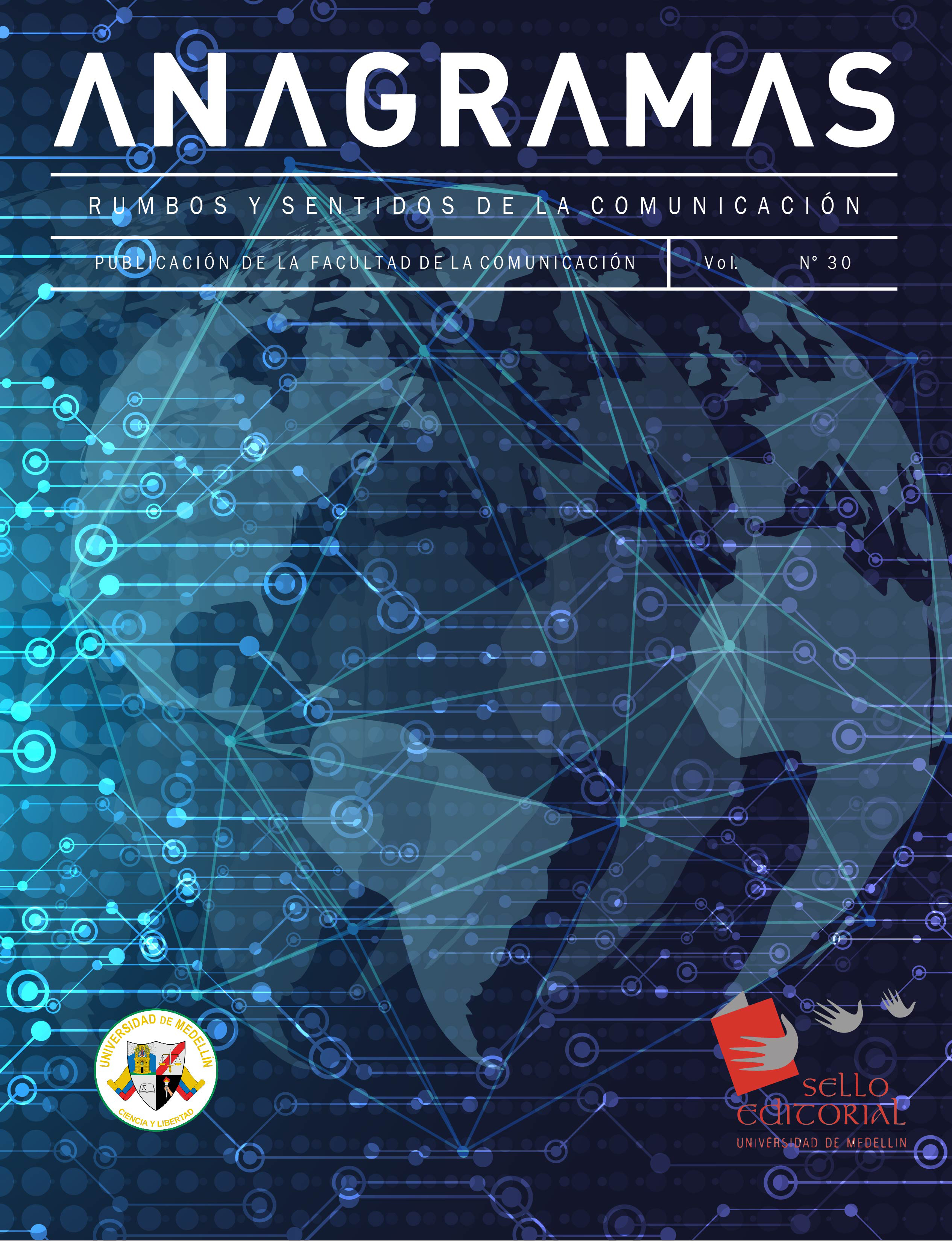Motivación para la búsqueda de información digital en salud en una comunidad quilombola
Contenido principal del artículo
Resumen
Con un estudio cualitativo inductivo operado por el método de la teoría fundamentada, observando el marco de Usos y Gratificaciones para el consumo de plataformas digitales, buscamos en este artículo presentar hallazgos empíricos sobre las razones que contribuyen a la búsqueda y consumo de información en salud digital por remanentes quilombolas de la comunidad Bairro Porto D’ Areia, en Estância, Sergipe. Aquí, describimos un recorte enfocado en la perspectiva de la motivación 'cuidar de sí y del otro', en el que privilegiamos la descripción de la necesidad de comprender información que identifica diagnósticos, síntomas, origen de enfermedades, terapias y medicamentos y que fomente 'la toma de decisiones tomadas sobre el autocuidado y la salud de los más allegados'. Con doce entrevistas en profundidad realizadas, relatamos aquí las experiencias de este grupo, que sobrevive al margen de estructuras como saneamiento básico, alimentación balanceada, áreas de deporte, educación, cultura y atención médica hospitalaria. Estos sujetos demandan atención en salud y mantienen contacto con las tecnologías digitales, por lo que es necesario comprender cómo tratan y deciden sobre la salud a partir de esta fuente de información. En ese ámbito, desvelamos las principales experiencias relatadas, motivaciones basadas en la respectiva capacidad de elección de los sujetos, ya que las condiciones estructurales de la comunidad terminan modulando sus prácticas cotidianas en materia de salud. Como resultado, observamos entre los entrevistados que la búsqueda del autocuidado está relacionada con el autodiagnóstico, uso de medicamentos, adopción de tratamientos y prácticas de cuidados preventivos para ancianos y niños.
Detalles del artículo
Citas
Ala-Mutka, K. (2011). Mapping Digital Competence: Towards a Conceptual Understanding. JRC Technical Notes. Retrieved October 2, 2020, from http://www.dctest.org/uploads/6/8/7/0/68701431/jrc67075_tn.pdf
Benigeri, M. (2003). Shortcomings of health information on the Internet. Health Promotion International, 18(4), 381-386. https://doi.org/10.1093/heapro/dag409
Bessell, T. L. (2003). Surfing, self-medicating and safety: buying non-prescription and complementary medicines via the internet. Quality and Safety in Health Care, 12(2), 88-92. https://doi.org/10.1136/qhc.12.2.88
Boyer, E. W., Shannon, M., & Hibberd, P. L. (2005). The Internet and Psychoactive Substance Use Among Innovative Drug Users. Pediatrics, 115(2), 302-305. https://doi.org/10.1542/peds.2004-1199
Carvalho, A. I. (2013). Determinantes sociais, econômicos e ambientais da saúde. In Fundação Oswaldo Cruz. A saúde no Brasil em 2030 - prospecção estratégica do sistema de saúde brasileiro: população e perfil sanitário (Vol. 2). Fiocruz/Ipea/Ministério da Saúde/Secretaria de Assuntos Estratégicos da Presidência da República. https://saudeamanha.fiocruz.br/wp-content/uploads/2016/07/11.pdf
Castiel, L. D., e Vasconcellos-Silva, P. R. (2002). Internet e o autocuidado em saúde: como juntar os trapinhos? História, Ciências, Saúde-Manguinhos, 9(2), 291-314. https://doi.org/10.1590/s0104-59702002000200004
Cline, R. J. W. (2001). Consumer health information seeking on the Internet: the state of the art. Health Education Research, 16(6), 671-692. https://doi.org/10.1093/her/16.6.671
Cotten, S. R., e Gupta, S. S. (2004). Characteristics of online and offline health information seekers and factors that discriminate between them. Social Science & Medicine, 59(9), 1795-1806. https://doi.org/10.1016/j.socscimed.2004.02.020
Demiris, G. (2016). Consumer Health Informatics: Past, Present, and Future of a Rapidly Evolving Domain. Yearbook of Medical Informatics, 25(S 01), S42-S47. https://doi.org/10.15265/iys2016-s005
Eysenbach, G., Powell, J., Kuss, O., e Sa, E. R. (2002). Empirical Studies Assessing the Quality of Health Information for Consumers on the World Wide Web. JAMA, 287(20), 2691-2700. https://doi.org/10.1001/jama.287.20.2691
Ferreira, R. M. C. (2010). A experiência da audiência das telenovelas em Portugal: um modelo a partir da teoria fundamentada em dados [Dissertação de Mestrado, Universidade Nova]. Repositório Institucional da Universidade Federal de Sergipe. https://ri.ufs.br/bitstream/riufs/8710/2/RAQUEL_MARQUES_CARRICO_FERREIRA.pdf
Fox, N., Ward, K., e O’Rourke, A. (2005). The ‘expert patient’: empowerment or medical dominance? The case of weight loss, pharmaceutical drugs and the Internet. Social Science & Medicine, 60(6), 1299-1309. https://doi.org/10.1016/j.socscimed.2004.07.005
Grierson, T., van Dijk, M. W., Dozois, E., e Mascher, J. (2006). Using the Internet to Build Community Capacity for Healthy Public Policy. Health Promotion Practice, 7(1), 13-22. https://doi.org/10.1177/1524839905278590
Hardey, M. (1999). Doctor in the house: the Internet as a source of lay health knowledge and the challenge to expertise. Sociology of Health & Illness, 21(6), 820-835. https://doi.org/10.1111/1467-9566.00185
Hardey, M. (2002). 'The story of my illness': personal accounts of illness on the Internet. Health, 6(1), 31-46. https://doi.org/10.1177/1363459302006001443
Huh, J., DeLorme, D. E., e Reid, L. N. (2005). Factors Affecting Trust in On-line Prescription Drug Information and Impact of Trust on Behavior Following Exposure to DTC Advertising. Journal of Health Communication, 10(8), 711-731. https://doi.org/10.1080/10810730500326716
Korp, P. (2006). Health on the Internet: implications for health promotion. Health Education Research, 21(1), 78-86. https://doi.org/10.1093/her/cyh043
Organização Mundial da Saúde (2003). Cuidados inovadores para condições crônicas: componentes estruturais de ação.
Orem, D. E. (2001). Nursing: Concepts of practice (6th ed.). Mosby
Petronilho, F. A. S. (2012). Autocuidado: conceito central da enfermagem. Da conceptualização aos dados empíricos através de uma revisão da literatura dos últimos 20 anos. Formasau.
Roberto, M. S., Fidalgo, A., e Buckingham, D. (2015). De que falamos quando falamos de infoexclusão e literacia digital? Perspectivas dos nativos digitais. SciELO Portugal, 9(1), 43-54.
Santos, L., e Andrade, L. O. M. D. (2012). Acesso à s ações e aos serviços de saúde: uma visão polissêmica. Ciência & Saúde Coletiva, 17(11), 2876-2878. https://doi.org/10.1590/s1413-81232012001100003
Silva, E. V. e Castro, L. L. C. (2010). A internet como forma interativa de busca de informação sobre saúde pelo paciente. CORE. https://core.ac.uk/download/pdf/33543502.pdf
Soares, M. C. (2004). Internet e saúde: possibilidades e limitações. Revista Textos de La CiberSociedad, 1(1). http://www.cibersociedad.net/textos/articulo.php?art=51
Strauss, A., & Corbin, J. (2008). Pesquisa qualitativa: técnicas e procedimentos para o desenvolvimento de teoria fundamentada. Artmed.
Zarcadoolas, C., Pleasant, A., & Greer, D. S. (2006). Advancing Health Literacy: A Framework for Understanding and Action (1st ed.). Jossey-Bass.
Ziebland, S., Chapple, A., Dumelow, C., Evans, J., Prinjha, S., e Rozmovits, L. (2004). How the internet affects patients’ experience of cancer: a qualitative study. BMJ, 328(7439), 564-569. https://doi.org/10.1136/bmj.328.7439.564





